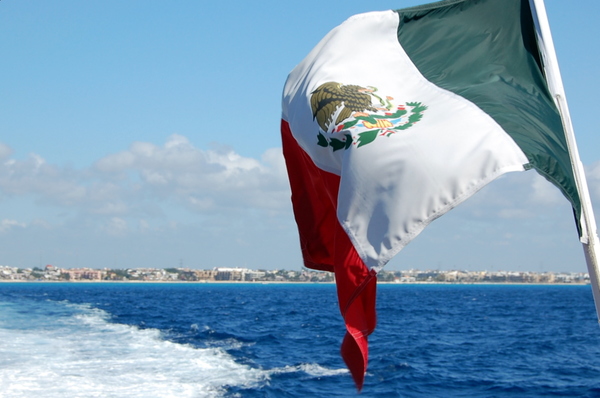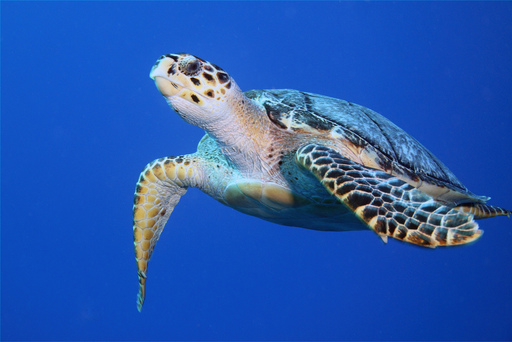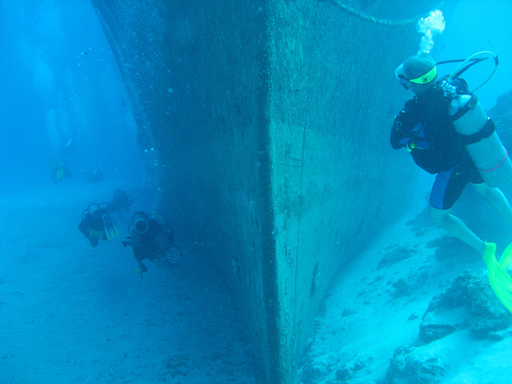5 of The Best Reefs to Explore When Scuba Diving in Cozumel
There’s a good reason Cozumel is consistently rated one of the best dive sites in the world. Located in the Caribbean Sea just off the Yucatan Peninsula, the Mexican government has done an admirable job of protecting the reefs, including 85% of dive sites in the Cozumel Reefs National Marine Park.
From coral reefs to a marine population that counts seahorses, sea turtles, nurse sharks and numerous species of colorful fish among its ranks, the diving in Cozumel is really unparalleled. Here are our topa 5 picks for can’t miss dives.

Dive Cozumel. Photo Credit: mdanys
1. Paradise Reef
Paradise Reef is actually three separate reefs with a maximum depth of 45 feet. That makes for a host of awesome dive sites that are easily accessible from the beach which makes it a great dive site for those who are new to scuba diving..
Expect to see plenty of lobsters, crabs, angelfish, yellowtails, octopuses moray eels and toadfish here among all of the colors, not to mention balloon-shaped corals. This is a popular site for night dives, so if you’ve ever dreamed of doing one, hire a good divemaster to tour you through the best spots and keep you safe.
2. Palancar Reef
Located on the Southwest side of Cozumel, the Palancar Reef also consists of many different sections, making it a rewarding place to explore. The colorful Palancar Gardens make for an appropriate novice dive site.
Palancar horseshoe, a site packed with coral heads up to 80 feet in height, is better suited to the intermediate diver. Palancar Caves and Bricks are also both great choices for intermediates, with buttresses and tunnels to explore in the former and a stunning blue abyss to oggle in the latter. Marine life along the reef includes: sponges, turtles, sharks and eagle rays, along with the requisite colorful fish.

You will found lots of Turtles when you dive Cozumel. Photo Credit: bcb905
3. Santa Rosa Reef
One of the most popular dive sites in the region, the Santa Rosa Reef is easily accessible from San Miguel (so get to the reef early to avoid high undersea traffic).
In the Santa Rosa Shallows, you’ll find yourself floating over smooth white sands, while along the wall, you’ll find a plethora of caves and tunnels to explore, not to mention giant sponges and stony coral. This reef goes quite deep, but there are plenty of ledges along the way on which to take a quick breather.
Along with the other marine life common to Cozumel, keep your eyes peeled for scrawled filefish, turtles, groupers, giant parrotfish, French and queen Angelfish, and even giant green moray eels.
4. Las Palmas Reef
Located right near Paradise Reef, Las Palmas is also quite popular among those in the know, featuring rough tube sponges, brain coral, and rope sponge. There are again both shallows and a wall here, and the gentle current also makes this spot great for night diving.
Along with divers, seahorses, honeycombed cowfish, batfish, splendid toads, sargent and parrotfish are some of the area’s most frequent visitors.
5. Barge Wreck
If you’re looking to mix things up a bit, the Barge Wreck opposite the Vista Del Mar Hotel will provide a new kind of adventure, though you’ll need to beware of sometimes strong currents, especially between November and April.
The barge that sank here met its doom in 1976, and is now completely a creature of the sea. You’ll find an abundance of marine life to keep you company as you explore the entire 100 foot length, including many different kinds of grouper. This site makes for great photo opportunities, day or night.

The Barge Wreck is a great dive in Cozumel. Photo Credit: tab2space
Whether you’re a seasoned diver or a tentative beginner, there is a stunning dive site in Cozumel that’s right for you. Choose yours, and enjoy your time under the sea!
What are your thoughts about the best reef to explore in Cozumel? Let us know in the comments below
Would you like to go dive Cozumel? Feel free to contact us. We have multiple partners that offer dive packages + accommodation and scuba lessons.
Guest post credits
Rob loves exploring the deep blue sea, from the bright blue of the Caribbean to the murky waters of the Pacific Northwest USA, it’s all fascinating. He is working alongside tripinsurance.com who recommends considering flight insurance before your next adventure.
This article is published by The Scuba Page, the online magazine for Scuba Dive lovers around the world. The Scuba Page is part of RUSHKULT: the online booking platform for adventure sports. Visit the RUSHKULT platform to book your next Scuba Dive training, guided trip and accommodation.

Leave a Comment